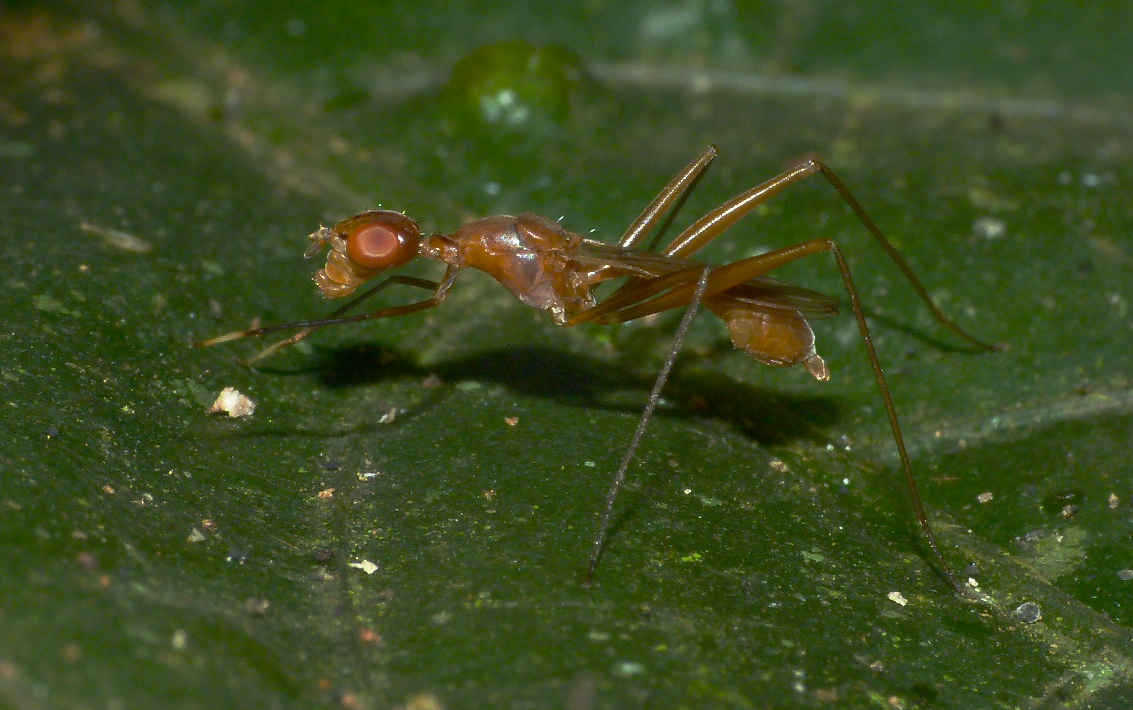The insect in the video above is a fly belonging to the family Micropezidae. It moves about on leaves in the undergrowth of the Western Ghats and resembles the dreaded weaver ant Oecophylla smaragdina. The exact species identity is unknown, but when I posted a static image to diptera.info, I noticed a very similar image posted from Thailand.
 | ||
| Another view of the ant-like Micropezid |
Well, the images are not quite what I would have liked. Every shake of the camera is much magnified and even the deshake feature of YouTube did not improve the output.
Looking around, I found something from Manfrotto called a Magic Arm which might presumably help in this kind of situation. A plain tripod is extremely difficult to use when you have to move around on uneven terrain covered by vegetation. Anyway Manfrotto is unaffordable but their idea suggests that their designers had only seen human bone joints. It seems like the human arm, at least mine, does not have any locking structures. The only locks I have heard of in vertebrates appears to be the case of the tendons running in the toes of perching birds when they go to sleep.
 |
| A bio-inspired idea for a flexible camera boom |
What about the invertebrates? I remember an old biology book that explained how amoebae move. The illustration used to suggest that the viscosity of their cytoplasm could be changed. So when putting out their pseudopodia they would let their internals flow in and then gellify it so that they can move in a particular direction. I do not find any related invention that makes use of this principle and since this has been demonstrated evolutionarily, perhaps it would make for something practical. A rough description of what I had in mind - a kind of tubular boom that could bend at most times and lock in place at will would be a boon for steady photography in the undergrowth. Essentially it involves the use a semi-flexible tubing - flexing but not allowing too much change in cross section - with a filling of small beads that have the right kind of friction properties. When the beads are not compressed the tube bends at will and when the beads press against each other, the tube is locked in place. Well thats the theory and given that amoebae use something like it, might well work. Now what about the weight of the material involved. That may indeed be a problem. Lets look at the tube legs of echinoderms for other options. The legs are moved by altering fluid pressure along microtubules and that offers a possibility of having a series of microscopic tubes along the edges of the main tube but how would the pressure be altered. The internal fluid would need to be incompressible and so using air seems to be no good - and it seems like the echinoderm principle might work better for someone with underwater applications.
Perhaps there are other solutions available for this but is there an inexpensive one?
PS: Noticed GorrilaPod. Another way might be to have velcro patches on ones elbows, knees etc so that one can actually lock arms to make ones own body into a stable triangular truss configuration !
No comments:
Post a Comment